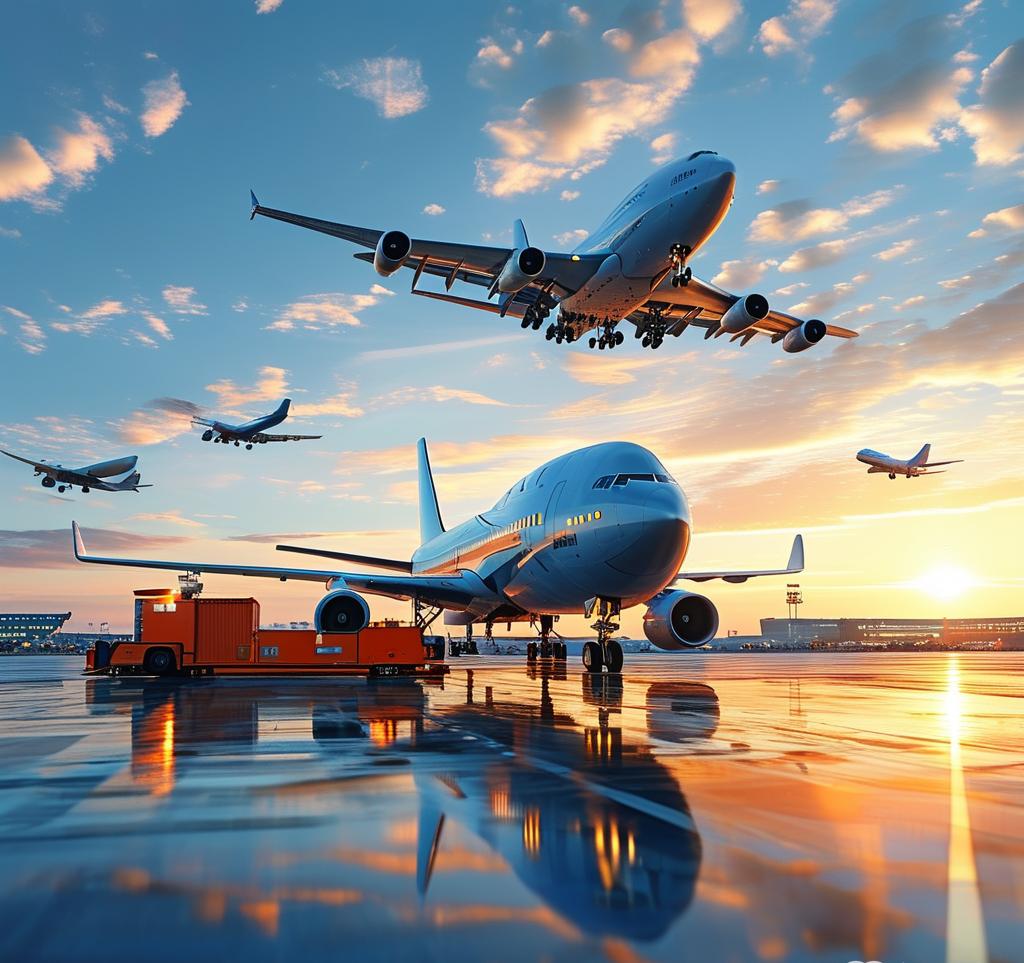- By TOP CHINA FREIGHT
- August 18, 2025
- Shipping
Table of Contents
Cheapest shipping from China to US is a major trade lifeline for businesses of all sizes. Every day, thousands of containers carry electronics, clothing, and consumer goods across the Pacific. But shipping efficiently and cost-effectively requires careful planning. This guide explains practical tips on transportation methods, routes, customs, and cost-saving strategies.

Understanding Transportation Options
Shipping cost and transit time depend heavily on the mode of transportation. The three primary options are sea freight, air freight, and express courier services.
| Shipping Method | Average Transit Time | Cost Efficiency | Best For |
|---|---|---|---|
| Sea Freight | 20–40 days | Very High | Large shipments, heavy cargo, bulk orders |
| Air Freight | 3–7 days | Moderate | Urgent shipments, lightweight or high-value goods |
| Express Courier | 1–5 days | Low | Small packages, e-commerce orders |

Sea Freight
Sea freight is the primary method for achieving the cheapest shipping from China to US. Within sea freight, shippers can choose Full Container Load (FCL) or Less than Container Load (LCL).
Full Container Load (FCL)
- Definition: Renting an entire container for your shipment.
- Ideal For: Bulk shipments over 15–20 cubic meters.
- Cost Efficiency: Lowest per-unit cost for large shipments.
- Pros: Secure, fast port handling, predictable schedules.
- Cons: Requires larger shipment volumes.
Less than Container Load (LCL)
- Definition: Sharing container space with other shippers.
- Ideal For: Small shipments under 15 cubic meters.
- Cost Efficiency: Cheaper than FCL for small shipments.
- Pros: Flexible, reduced upfront costs.
- Cons: Longer transit times due to consolidation; higher handling risk.
Example:
A small business importing 2 cubic meters of electronics may save up to 40% using LCL instead of FCL.

Air Freight
Air freight is suitable for urgent shipments or small, high-value cargo. While generally more expensive than sea freight, it can be the most practical for businesses prioritizing speed.
Pros:
Fast delivery (3–7 days), reliable schedules, minimal handling damage.
Cons:
High per-kilogram costs, restrictions on oversized cargo.
Tip:
Air freight can be cost-effective for high-value electronics or urgent replacement parts.

Express Courier Services
Companies like DHL, FedEx, and UPS provide express courier services for small shipments. Delivery is usually within 1–5 days.
Pros:
Door-to-door delivery, tracking, minimal paperwork.
Cons:
Expensive for bulk shipments; limited weight capacity.
When to Use:
E-commerce parcels or urgent samples.
Choosing the Right Shipping Ports
| Major Chinese Ports | Key Features |
|---|---|
| Shanghai | High-volume port, efficient for almost all types of cargo |
| Shenzhen | Ideal for electronics and consumer goods from southern China |
| Ningbo | Handles industrial shipments efficiently |
| Qingdao | Popular for northern China exports |
| Major US Ports | Key Features |
|---|---|
| Los Angeles / Long Beach | West Coast hub, ideal for Asian shipments |
| New York / New Jersey | East Coast shipments, great for bulk imports |
| Savannah | Growing port for industrial and retail goods |
| Houston | Key for heavy equipment and industrial machinery |
Factors Affecting the Cheapest Shipping from China to US
Larger shipments enjoy economies of scale via FCL; small shipments may benefit from LCL.
Fragile, hazardous, or temperature-sensitive cargo can increase costs.
Proper documentation minimizes delays and penalties.
Peak seasons raise freight rates.
Direct routes reduce costs, while transshipment adds fees.
Professional forwarders negotiate better rates and streamline paperwork.
Step-by-Step Shipping Process
1.Quote Request:
Obtain rates from multiple freight forwarders.
2.Booking:
Reserve container space or air cargo.
3.Pickup and Packaging:
Pack goods securely; mark hazardous or fragile items.
4.Export Customs Clearance:
Forwarder prepares commercial invoice, packing list, and other documents.
5.Transit:
Shipment travels by sea, air, or courier.
6.Import Customs Clearance:
US customs examines shipment and levies duties.
7.Delivery:
Goods reach the warehouse or fulfillment center.
Cost-Saving Strategies
| Strategy | Description |
|---|---|
| Consolidate Shipments | Combine multiple orders into one container to reduce per-unit cost |
| Choose LCL for Small Shipments | Share container space with other shippers to lower cost |
| Negotiate with Freight Forwarders | Experienced providers can secure lower rates and streamline customs clearance |
| Plan Ahead | Avoid peak season surcharges and ensure better container availability |
| Optimize Packaging | Use compact, strong packaging to reduce dimensional weight charges |
| Consider Alternative Ports | Select ports with lower fees to reduce total shipping cost |
| Port-to-Port Shipping | Skip inland transport when local delivery is unnecessary for savings |
Customs and Documentation
Efficient customs clearance is essential for the cheapest shipping from China to US.
Documents Required:
Commercial Invoice, Packing List, Bill of Lading, Certificate of Origin, Import Licenses (if applicable).
Tips:
Work with an experienced freight forwarder to avoid fines, storage fees, or delays.
Packaging, Insurance, and Risk Management
- Proper Packaging: Reduces risk of damage and may lower shipping cost.
- Insurance: Protects against loss or damage during transit.
- Labeling: Correct labels and markings prevent customs delays.
- Tracking: Real-time shipment tracking ensures timely intervention if issues arise.
Real-World Cost Examples
| Shipment Type | Mode | Volume | Estimated Cost | Transit Time |
|---|---|---|---|---|
| Small electronics | LCL sea freight | 2 m³ | $350–$450 | 25–30 days |
| Bulk clothing | FCL sea freight | 20 ft container | $1,200–$1,500 | 30–35 days |
| Urgent machinery | Air freight | 500 kg | $2,500–$3,000 | 4–6 days |
| E-commerce samples | Express courier | 10 kg | $150–$200 | 2–4 days |
Seasonal Trends and Planning
- Peak Season (July–December): High demand, increased shipping costs.
- Off-Peak Season (January–June): Lower rates, better container availability.
- Tip: Schedule shipments during off-peak periods whenever possible to maximize savings.
Conclusion
Achieving the cheapest shipping from China to US requires a combination of smart planning, strategic port selection, and choosing the right transportation method. Sea freight remains the most cost-effective option for large shipments, while air freight and express couriers serve urgent or small parcels. Utilizing strategies such as consolidating shipments, choosing LCL for smaller orders, negotiating with experienced freight forwarders, and optimizing packaging can significantly reduce overall costs.
Need a Shipping Quote?
If you want expert guidance and peace of mind, our team is ready to assist.
TJ China Freight offers tailored solutions to help businesses of all sizes ship more reliably from China.
FAQs
Q1:Can I mix shipping methods to save costs?
Yes. For example, large bulk shipments can go by sea, while urgent smaller items can be shipped by air to balance cost and speed.
Q2:How do customs duties affect shipping costs?
Customs duties and taxes vary by product type and value. Proper documentation and tariff classification reduce unexpected costs.
Q3:What is the difference between LCL and FCL shipping?
LCL (Less than Container Load) allows multiple shippers to share a container, ideal for small shipments. FCL (Full Container Load) rents the entire container, better for bulk shipments.
Q4:Are there hidden costs I should be aware of?
Yes. Fees like port handling, documentation, storage, insurance, and last-mile delivery can add to total shipping costs.
Q5:How can I track my shipment efficiently?
Most freight forwarders provide real-time tracking. Using forwarders with online dashboards or mobile apps helps monitor your cargo throughout transit.
